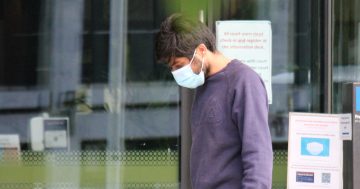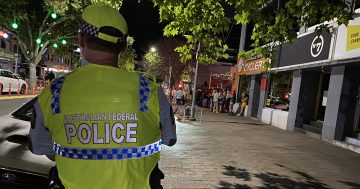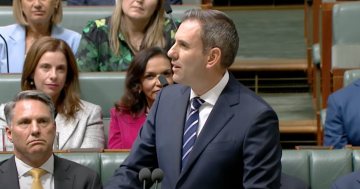I stumbled onto this site by accident. I’m impressed by the quality of both the informed and uninformed comment. I’m game to test the waters. Here’s my opening gambit. I’d like to revisit the taxi issue. I’ll do my best to respond seriously and intelligently to comments:
THE TAXI REVIEW – WHAT NEXT?
Another Government-sponsored review of the taxi industry has just been completed; making it the third or fourth major review of the industry in about the last 10 years. This latest review has been a monumental effort, taking more than 12 months from start to finish. It commenced in August 2009 and Price Waterhouse Coopers handed the final report to the Minister in September 2010.
So what did Canberra get for all this effort?
Firstly, PWC should be commended for constructing a report that successfully provides Government with a solution to the problem that it needs to solve. Unfortunately, the solution is a political one, rather than one that will actually achieve any improvement to Canberra’s taxi services. But this isn’t PWC’s fault – it was tasked with solving a political problem rather than a perceived service delivery one.
Based on the report, Canberra can expect Government to release about 50 more taxi licences over the next eight months; and about 10 each year after that. Obviously, this is fewer than proposed by some review participants; and it is clearly more than taxi industry participants think the market can support. From a Government perspective though, if nobody is entirely happy then they’ve probably struck the right balance.
On the face of it, this solves the problem. But what are the real implications?
The PWC report acknowledges that taxi industry incomes are already below community norms. But it suggests that more taxis will produce a level of service that will implicitly lead to higher taxi usage. The belief appears to be that each new taxi will not only generate new work sufficient to make it financially viable on its own, but also that the overall growth in usage will raise the income levels of all the other taxis as well.
The reality is likely to be somewhat different.
Unlike the taxi networks, which have a guaranteed income stream from the taxis that pay (regardless of the prevailing economic conditions) for access to their booking and despatch services, each taxi driver’s income is totally dependent on how many customers he can pick up in a shift. Commonsense suggests that more taxis will reduce the number of customers that each driver will be able to pick up. So, individual taxi driver incomes will drop. Noting that PWC has assessed a representative taxi driver’s present income at about $25,000, it’s not unrealistic to expect that a lower income next year will see some drivers leave the industry. It is less realistic to expect that a prospective income of less than $25,000 will attract many replacement drivers.
The first real implication is that the number of taxi drivers is more likely to decrease rather than increase. Future failure to address this basic attraction and retention issue will see further service problems arise.
The other group of taxi industry participants who actually rely on income from taxi users are the people who operate the taxis. Some of these people also drive their taxis.
Those taxi operators who don’t drive are likely to be the first affected by a reduction in fares incomes and a loss of drivers. If lowered incomes reach a tipping point where business viability becomes critical, these operators will explore all possibilities to minimise expenses. This could involve avoiding workers compensation or other insurance costs; or minimizing preventative vehicle maintenance. Some may make unsound commercial decisions that keep them in business a little longer, while others will leave the industry before that happens. A number have already taken this step – and their taxi licences have not been taken up by new entrants. In either event, the number and/or quality of taxis actually in operation will be compromised. Government is presently holding a number of taxi licences that could be picking up customers now; instead, all that they’re picking up is dust.
The group of taxi operators who also drive their taxis are likely to be last group affected. PWC estimates that they account for about 70% of taxis currently in operation. They will be the last affected because they have the inherent flexibility to personally do more driving and, theoretically, to gain a larger income. In addition, as a final option, they have the capacity to shed drivers and further increase their own driving opportunities. While shedding drivers might seem an odd response to a contracting business, the reality is that an operator/driver can focus on high demand times of the day and achieve, in a single extended shift, an income equal to the aggregated income of two shifts otherwise split between himself and a driver. This also enables him to legitimately reduce a range of variable expenses including fuel, maintenance and workers compensation insurance. The immediate result is that the operator/driver stays in business by working longer hours and by having his taxi off the road in lower demand times. The overall outcome is that a driver loses his job, the operator forfeits any work/family balance that he previously had and the taxi service is only available for 12-13 hours each day instead of the 20-21 hours that it presently operates. And this outcome has the potential to affect up to 70% of the taxis. This has obvious societal and taxi availability implications.
What can Government do to avoid this happening if, in fact, it has any real interest in having a reliable and sustainable taxi service?
Obviously, it could test all the negative perceptions that sections of the community have of the taxi service. This hasn’t been done. It could do this through an arms length customer satisfaction survey of a large cross-section of local residents and visitors. This could present a clearer picture of the overall performance of the taxi industry.
Secondly, it could conduct its own, or an arms length, study of the specific problems raised by interest groups relating to the airport, restaurants, hotels and late night transport services; as well as how these are impacted by traffic and public transport issues throughout Canberra. This hasn’t been done.
And, if these studies were to confirm that Canberra doesn’t actually have enough taxis to meet the demand for taxi (as opposed to public transport) services, then it would need to honestly address the income reduction issues that would inevitably arise within the taxi industry. Otherwise, any improvements could be short-lived.
The challenge for the Minister, before making a decision on the PWC report, is to step outside the narrow political focus that has been a feature of the review to date. Alternatively, we can all look forward to the imminent major review into why Canberra doesn’t have any taxis operating at night or on the weekend.



















